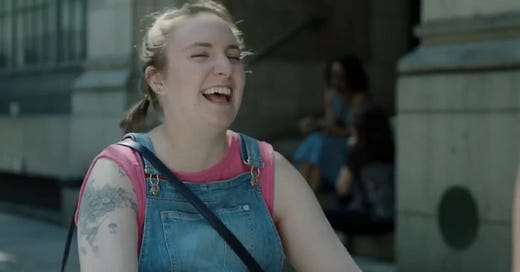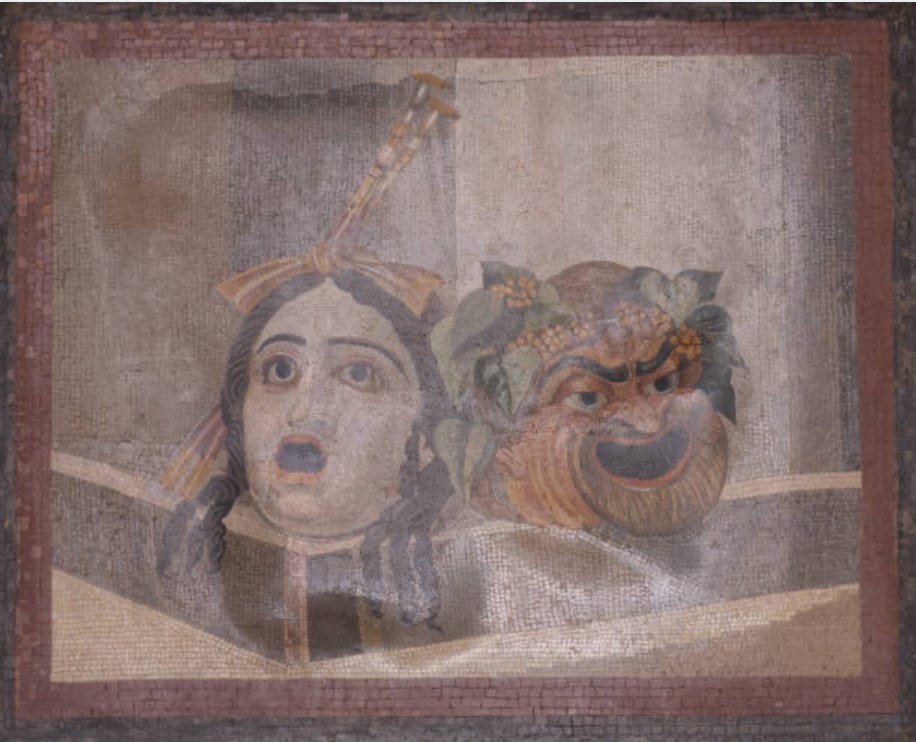The Good, The Bad & The Ugly: What Makes A Hit?
Have you ever watched a film or series and thought - this is the best thing ever but I don’t know why? Or why a second season so often falls flat compared to the first?
To find out, I spoke to Amy Rose Scoggins, a director and theatre-maker based in Pittsburgh. With a degree in theatre, and drawing from her Story Analysis course taught by Emily Thomas, a former Pixar script consultant and professional story editor, Amy gave me a sharp and structured take on what makes a story resonate, or fall flat.
Amy, how do you define a story that “works”? Are there any hard and fast rules?
A story’s “theme” is its essential DNA. When we say theme, this usually involves exploring a question or statement that can’t be answered.
Once you’ve nailed the theme, it becomes your filter. I was taught that if a scene or line of dialogue doesn’t serve the theme, it’s out.
Would you say a story lacking a clear theme tends to feel less coherent or emotionally resonant?
Yes I think so. If you don’t lead with the theme, the story is going to be blurry. This is usually why audiences find a second series of a beloved TV show weaker than the first. The priority here is to make money, now that producers know the series is financially viable, and not to tell a good story with a strong theme.
Severance, for instance, had a really strong theme in Season 1. It was about work-life balance and whether this is really possible. Every storyline served this theme and made the season cohesive and emotionally engaging. Season 2, however, broadened the scope and fell apart slightly because it did not have this thematic thread tying it all together. Having said that, it’s a beautifully crafted series and it hasn’t concluded yet, so it’s perhaps too early to say whether or not Season 2 fits into the broader theme of the show.
Are there any universal rules scriptwriters follow when it comes to structure?
Almost always, the same arc is used across any story. You will have the inciting incident, midpoint, climax, and then resolution.
The inciting incident, the event that forces a character to act, will be linked to the theme.
In Finding Nemo, for instance, the major question the film is exploring is about the difficulty of trusting your kid to grow up. The inciting incident, then, allows this theme to be explored by separating the father and son (when Nemo is scooped up by some goggles). This allows Nemo to go through trials that show his father he can trust him to be autonomous.
How does this structure device help you to flesh out your characters?
Your inciting incident should be a “gift” to your character in the sense that it should challenge them to consider their “normal ways” of doing things and drive them towards growth and change. As the plot unfolds, a character’s choice to acknowledge their shortcomings (or not), will lead them to a successful or unsuccessful outcome.
I was taught that the problem presented in the status quo must then be pressing enough that your characters are forced to abandon the comfort of their norm, i.e. there must be something at stake if they don’t address the problem (motivation).
If we return to Finding Nemo, for instance, Marlin is forced to abandon the status quo when he is separated from his son to realise that Nemo is capable of being autonomous. He has a successful outcome in this sense.
Even Reality TV uses this formula. If you look at a show like Too Hot To Handle, for instance, the producers ask contestants to pursue an emotional connection over sexual gratification. This premise becomes the inciting incident, and the contestants’ reactions become their arcs.
Conversely, if we think of the TV show, Girls, Hannah is arguably much the same in the last episode as she is in the first. She loses in this sense because she hasn’t moved out of her comfort zone. Lena Dunham is consciously subverting this trope to reveal exactly what kind of person her protagonist is.
HBO/Girls official trailer (YouTube)
What are the most common mistakes writers make when crafting emotionally believable characters?
Audiences are instinctive. It’s really important, as my tutor Emily Thomas noted, to write what you know and avoid giving characters a perspective that you don’t yourself have experience of.
If you venture into completely unknown territory, an audience can feel that lack of authenticity and your characters and story will fall flat.
Another important thing to note is that, even if you have a character who is an antihero (e.g. Tony Soprano), they need to have some sort of redemptive quality. Without this, an audience will have a hard time embracing your characters in the face of evidence of their flaws, which are often demonstrated in their least-likeable choices. It also makes them more layered and real because as humans, we aren’t entirely evil or good; we’re more messy than that.
HBO/The Sopranos official trailer (YouTube)
What is the role of genre tropes in the fabrication of a successful story?
Each genre has different “tropes”. For example, horror is associated with different tropes like people getting picked off one by one, or the last girl standing.
However, genres should be seen more as tools to help you tell a story, and you don’t have to stick to the conventions of a genre to make a successful piece of work.
Indeed, many films will borrow tropes from different genres to evoke feelings from the audience or use a specific genre, even though it may not initially suit the theme. For instance, Get Out is about systemic racism. The film wants you to feel scared and uncomfortable and so uses horror tropes to make you scared and feel the theme.
Universal Pictures/Get Out official trailer (YouTube)
Do you think societal or political factors shape which stories get greenlit?
Absolutely, and there are two main ways I think this happens.
Firstly, societal or political factors can change how a story is communicated. If a theme feels uncomfortable or polarising, producers may repackage it for palatability and marketability.
More obviously, societal and political factors influence what stories are most interesting to people. For example, it is no coincidence that we’ve seen a resurgence in apocalypse films; the combination of Covid, climate change and the rise of AI have led people to believe that the end of the world is coming. Producers are capitalising on this fear because audiences want to see what a worst-case scenario could look like.
Do you think short-form (TikTok/Instagram) is changing the DNA of how stories are told - or just where they’re told?
I think that the rise of short-form actually gives films and TV a special edge.
Short-form media is almost always consumed alone and is highly personal because the algorithm will show you what you yourself are interested in as an individual.
However, we are social creatures by nature and want to share entertainment collectively. This is as old as time; the existence of Greek Tragedy shows that society has always wanted to use stories to ruminate collectively on society and the world around us. I still think audiences want to experience art together - look at the success of Barbenheimer, which in large part was about the physical act of going to the cinema.
iStock by Getty Images
This need for collective storytelling is the unique gift of theatre and the cinema and so long form storytelling may become even more valuable as attention spans fragment. However, I don’t think theatre and cinema are fully embracing the advantages they have - I hope this will change in the coming years.
Where does AI help or hinder in finding a good story?
While AI may summarise scripts or generate coverage notes, it struggles with tone, emotional pacing - and the elusive quality that is “vibe.”
Conclusion
What can we learn from Amy’s unique perspective on the DNA of a successful story? As AI rises, and short-form rises, the power of long-form human storytelling will become more important than ever.
The success of its content, whether it be a documentary or a drama, will rely on the creators knowing what they are trying to say. Clarity of theme and character will continue to draw audiences to the screen, even as our media trends rapidly evolve.






